Abstract
OBJECTIVES--The main objective of this study was to investigate exposure-response relations between adverse musculoskeletal outcomes and ergonomic exposure variables. METHODS--A cross sectional analytical study was conducted in 11 factories from seven sectors of manufacturing industry in South Africa. Exposure to workplace ergonomic stressors was assessed in factory floor jobs (n = 46) with a simple low technology observational model. Repetition, force, static posture, dynamic movement, and other job exposures were measured. Data of adverse musculoskeletal outcome and data on potential confounders and effect modifiers were obtained from subjects (n = 401) randomly sampled from each job category with a questionnaire given by interviewers. RESULTS--High prevalences of regional musculoskeletal pain were found with substantial variability between industries. Sex was the only individual risk factor (after adjustment for potential confounders and effect modifiers) that was significantly associated with regional pain. Ergonomic exposures in the workplace were significantly associated with musculoskeletal pain of the neck and shoulders odds ratio (OR) 5.38 (95% confidence interval (95% CI) 1.16 to 25.0) for repetition, and OR 3.91 (95% CI 1.11 to 13.7) for seated compared with standing work; pain of the wrists and hands OR 10.2 (95% CI 1.39 to 75.6) for high summed score of dynamic postures of the wrist). CONCLUSIONS--This study indicates good predictive ability to reduce ergonomic stress with the exposure model, simple surveillance methods, and educational programmes in the workplace. Further study on sampling strategies and refinement of dimensions of ergonomic stressors are needed.
Full text
PDF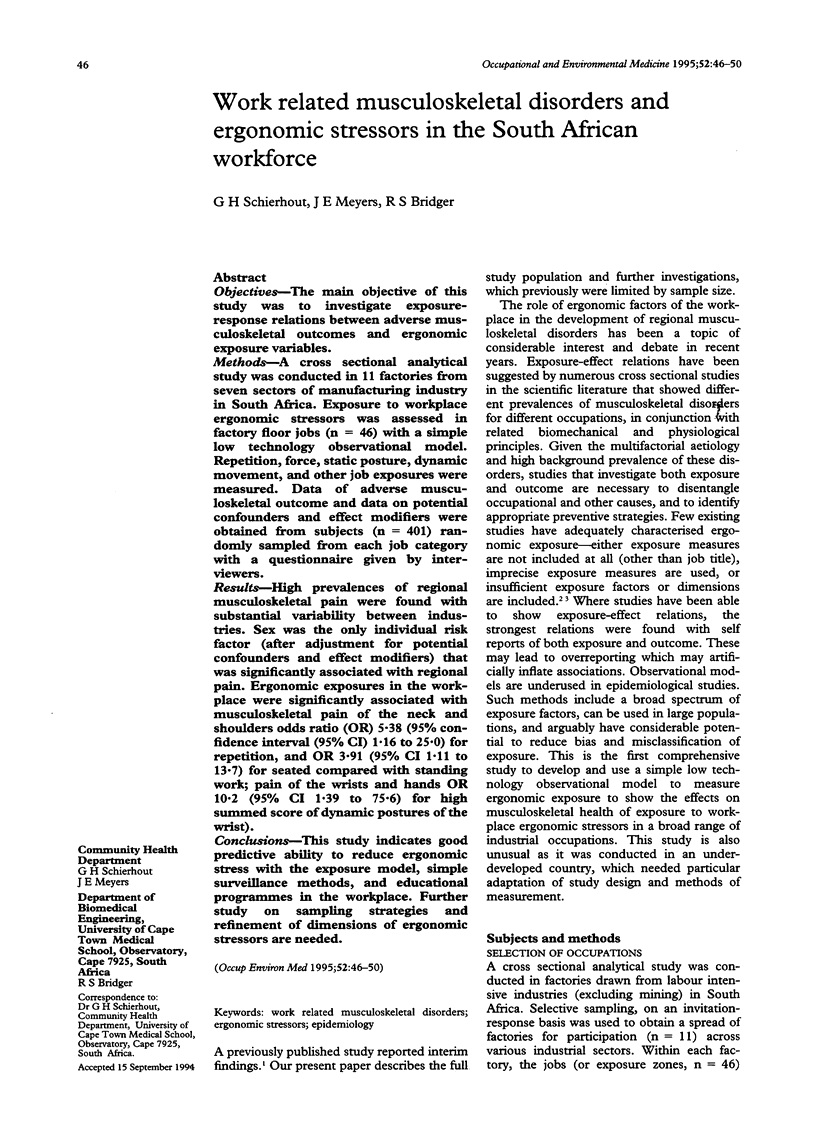
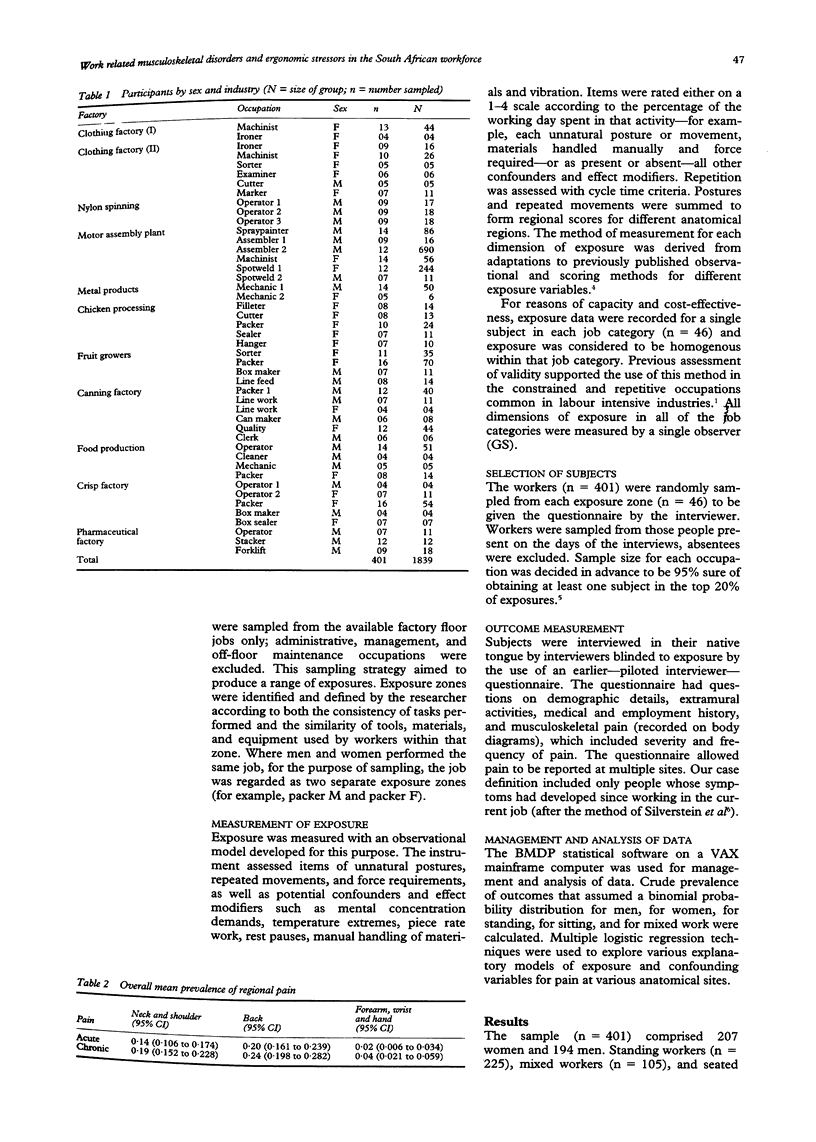
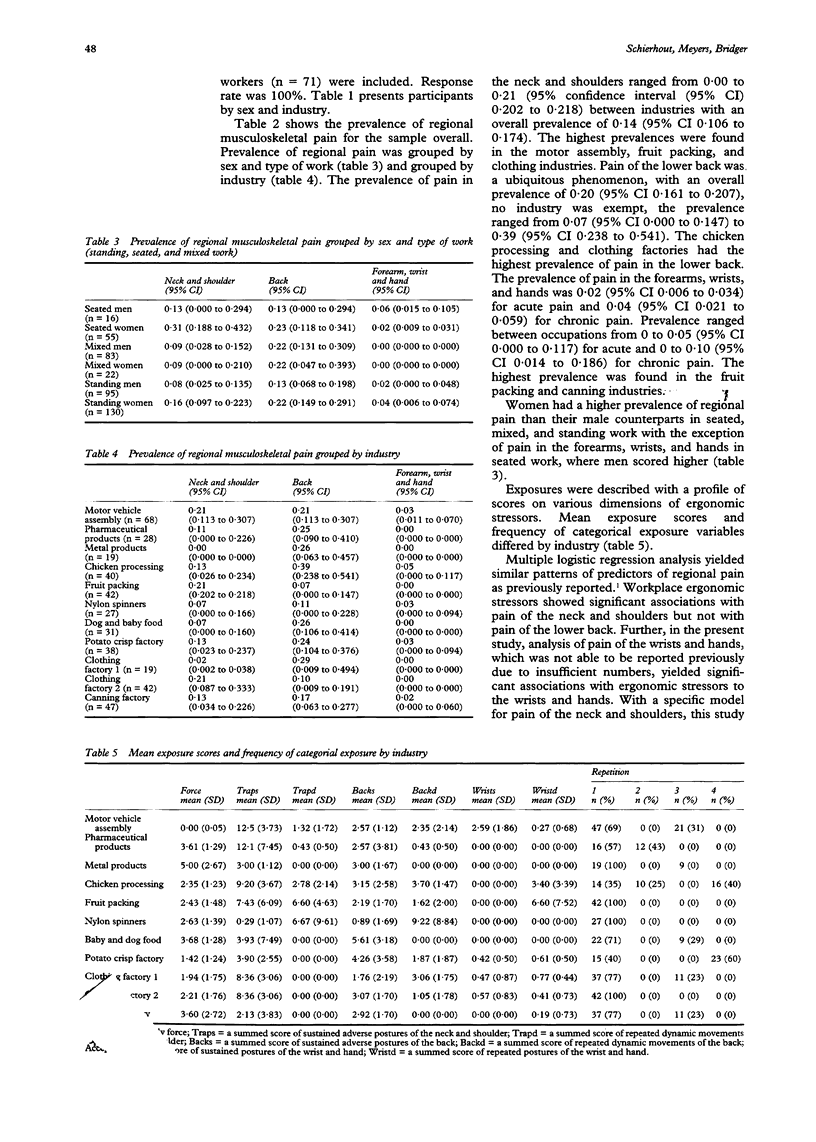
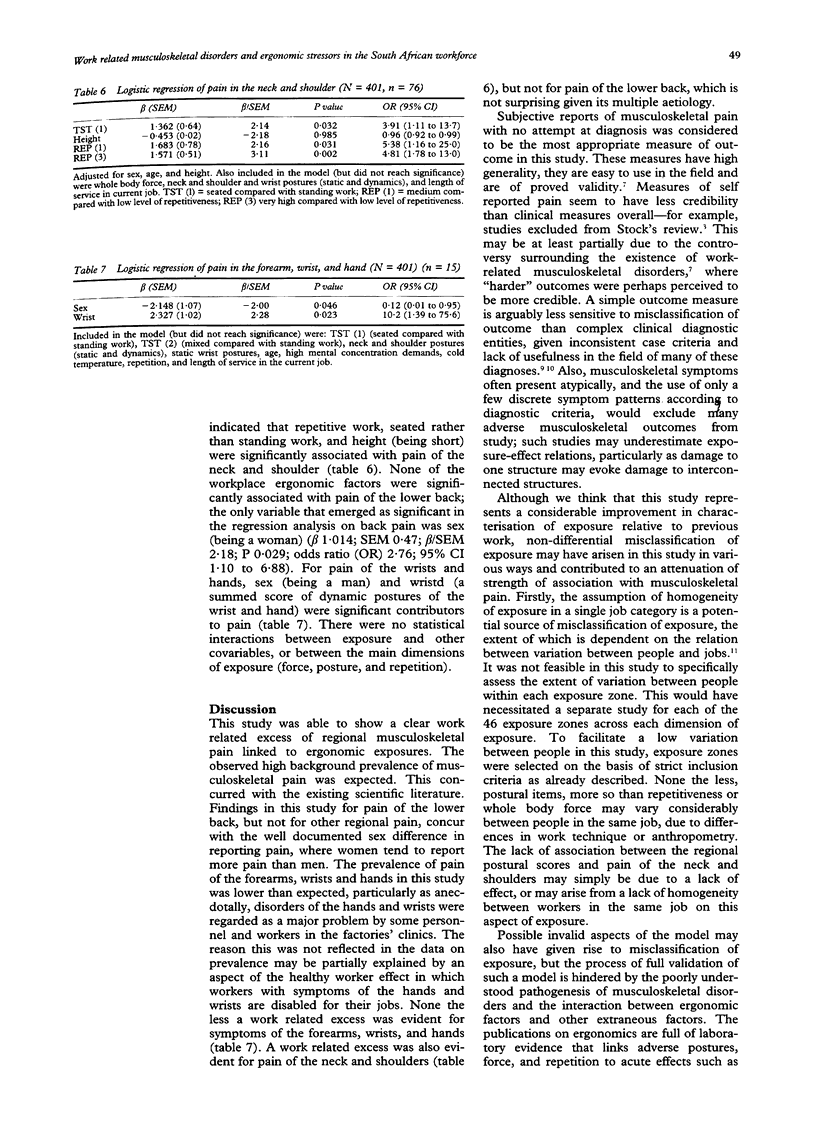
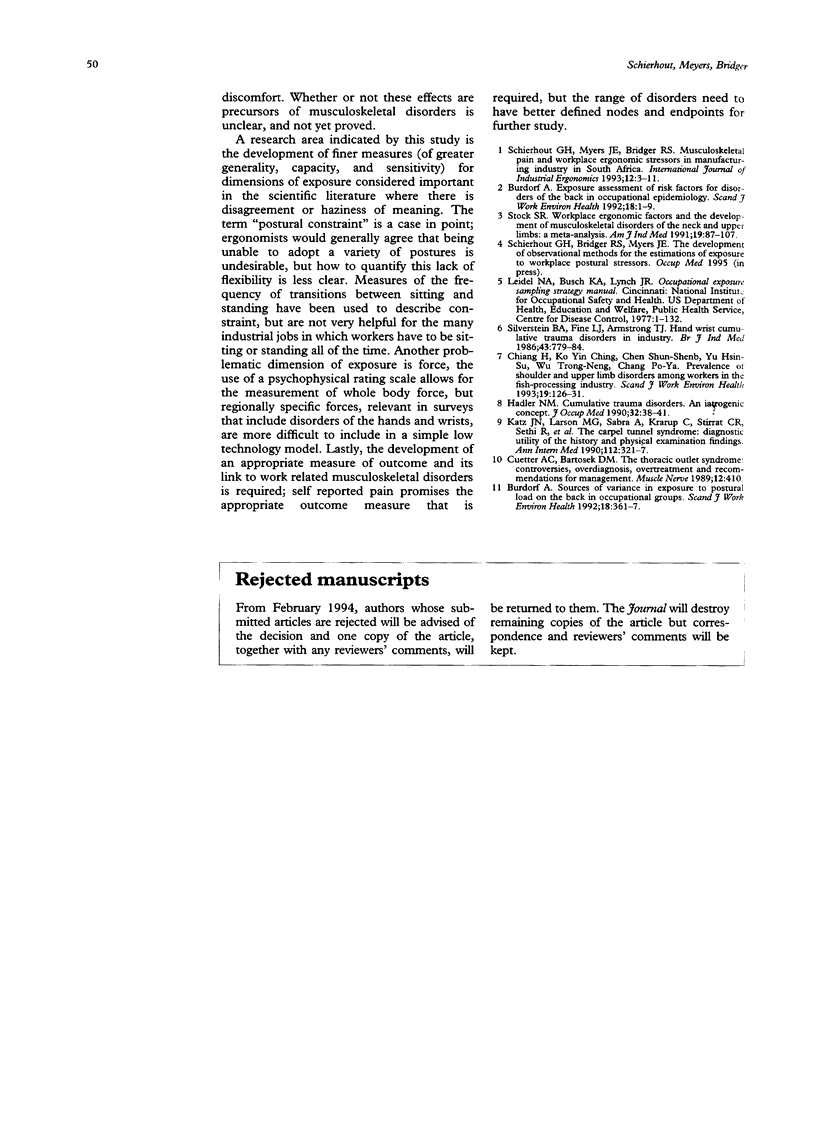
Selected References
These references are in PubMed. This may not be the complete list of references from this article.
- Burdorf A. Sources of variance in exposure to postural load on the back in occupational groups. Scand J Work Environ Health. 1992 Dec;18(6):361–367. doi: 10.5271/sjweh.1561. [DOI] [PubMed] [Google Scholar]
- Chiang H. C., Ko Y. C., Chen S. S., Yu H. S., Wu T. N., Chang P. Y. Prevalence of shoulder and upper-limb disorders among workers in the fish-processing industry. Scand J Work Environ Health. 1993 Apr;19(2):126–131. doi: 10.5271/sjweh.1496. [DOI] [PubMed] [Google Scholar]
- Cuetter A. C., Bartoszek D. M. The thoracic outlet syndrome: controversies, overdiagnosis, overtreatment, and recommendations for management. Muscle Nerve. 1989 May;12(5):410–419. doi: 10.1002/mus.880120512. [DOI] [PubMed] [Google Scholar]
- Hadler N. M. Cumulative trauma disorders. An iatrogenic concept. J Occup Med. 1990 Jan;32(1):38–41. [PubMed] [Google Scholar]
- Katz J. N., Larson M. G., Sabra A., Krarup C., Stirrat C. R., Sethi R., Eaton H. M., Fossel A. H., Liang M. H. The carpal tunnel syndrome: diagnostic utility of the history and physical examination findings. Ann Intern Med. 1990 Mar 1;112(5):321–327. doi: 10.7326/0003-4819-112-5-321. [DOI] [PubMed] [Google Scholar]
- Silverstein B. A., Fine L. J., Armstrong T. J. Hand wrist cumulative trauma disorders in industry. Br J Ind Med. 1986 Nov;43(11):779–784. doi: 10.1136/oem.43.11.779. [DOI] [PMC free article] [PubMed] [Google Scholar]
- Stock S. R. Workplace ergonomic factors and the development of musculoskeletal disorders of the neck and upper limbs: a meta-analysis. Am J Ind Med. 1991;19(1):87–107. doi: 10.1002/ajim.4700190111. [DOI] [PubMed] [Google Scholar]


